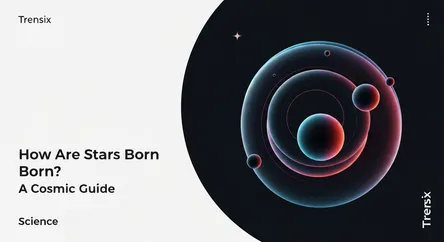Science
How Are Stars Born? A Cosmic Guide

Discover the cosmic process of star formation, where vast clouds of gas and dust collapse under gravity to ignite new suns in stellar nurseries.
What is it?
Star formation is the process where dense regions within clouds of gas and dust collapse under gravity. These 'stellar nurseries' form a hot core called a protostar. As the protostar gathers mass, its core becomes incredibly dense and hot. When it's hot enough to trigger nuclear fusion—fusing hydrogen into helium—a star is born. This ignition releases enormous energy, causing the star to shine and push away remaining cloud material. The entire process can take millions of years from cloud collapse to a fully-fledged star.
Why is it trending?
Powerful telescopes like the James Webb Space Telescope (JWST) are capturing star formation in stunning detail. JWST's infrared vision pierces through cosmic dust, revealing images of protostars and the disks where planets are born. These breathtaking visuals and the scientific data they provide are constantly making headlines, refining our understanding of how planetary systems form and captivating a global audience with the universe's raw beauty.
How does it affect people?
This process is fundamental to our existence. Our Sun was born this way, providing the energy that sustains life on Earth. Furthermore, stars are cosmic forges that create heavier elements like carbon and oxygen—the very building blocks of our planet and bodies. Studying star formation is to study our own origin story and explore the potential for life to emerge elsewhere in the cosmos.